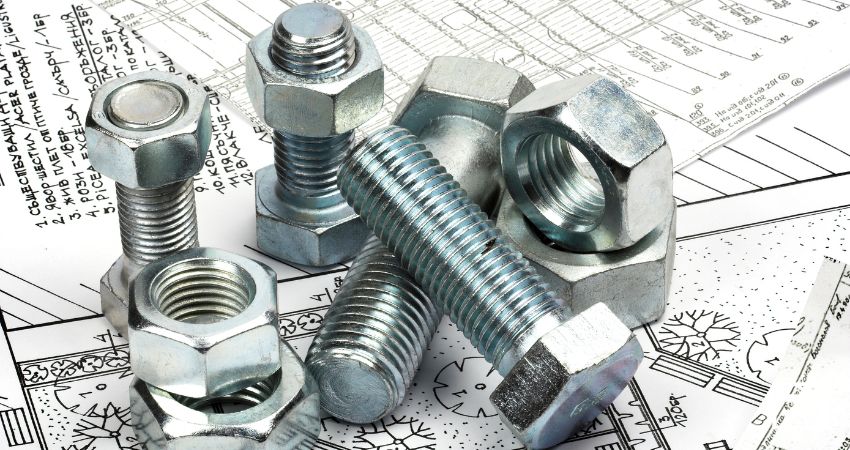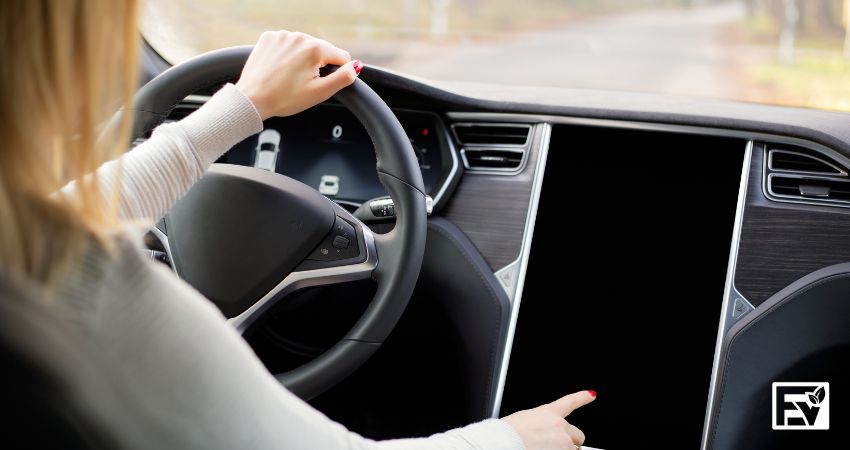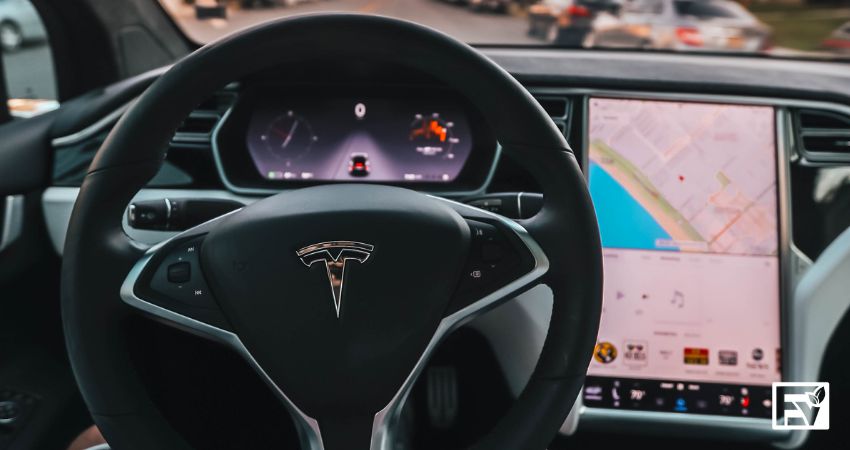Tesla cars are equipped with electric power steering systems. To give their drivers the best experience, the company is enhancing technology daily, making the steering more efficient. However, as the law of nature goes, nothing is perfect—and several problems can also appear in advanced Tesla power steering.
Your Tesla’s power steering is causing issues due to software or hardware-related problems. The steering can malfunction due to universal joint issues, faulty bolts in the rack, software glitches, motor failure, bad torque sensors, or belt-related issues.
Most Reported Problems With Tesla Power Steering
- Underpowered/Stiff Steering: In this condition, the power feature is eliminated from the ‘power’ steering in a Tesla car. Due to some reasons, the steering wheel becomes hard and is difficult to rotate, especially when the vehicle is stationary or driven at a slow speed.
- Overpowered/Loose Steering: Under some circumstances, the power steering might become overpowered—the opposite of stiff steering. Even a small application of force might result in a greater response. However, it is rare, and not many reasons are associated with it.
- Insensitive Steering: A steering might become insensitive due to software or electrical issues. The steering wheel will rotate, but there will be no effect on the wheels.
Read: Why Does Electric Car Steering Give Electric Shocks?
Tesla Power Steering Issues Explained
1. Bad Universal Joint
If your Tesla’s steering becomes hard after rotating at any specific angle, the universal “u” joint is causing the issue. Often, the stiffness occurs after every 90 degrees rotation. A lot of Tesla Model S and X users have reported this issue.

U-joints are the vital parts in a car to transfer the force from the steering wheel to the rack. It might loosen or stiffen the steering wheel if it fails to do the job. Unfortunately, u-joints in Tesla Model S and X can rust easily, eventually failing to carry out their duties. A simple joint inspection can tell you if it is the culprit. Just take off the left wheel of your Tesla to see it.
2. Faulty Bolts
Tesla power steering can malfunction if the aluminum bolt between the steering and the gear housing breaks. If your Tesla is either Model X or S and you purchased it before October 2016, you will likely face this issue.

The problem occurs because of the corrosion of the bolt. The aluminum bolt can quickly wear away due to the salt used on the roads in cold climates. The problem went unnoticed until 2020, when Tesla ordered a recall of all Model Xs in the US and Canada to fix it. In 2018, the Model S suffered a similar issue. However, it involved five bolts instead of only one.
Read: Why Is My Electric Car Shaking at High Speeds?
3. Software Glitches

Software issues can render the power steering ineffective for a certain period. It usually occurs with the error messages on the screen. However, note that the software alone cannot be blamed for this issue. Some electrical faults might also lead to a similar outcome. To confirm if you are having this experience due to a software glitch, try rebooting your Tesla, and it should go away. Otherwise, there might be some other trouble with your power steering system.
4. Power Steering Motor Failure
Electric motors can fail, causing the power steering system to stop working. Motors are the heart of Tesla’s electrically powered steering systems; if they heat excessively, they can burn out. However, even if the power steering is rendered ineffective, it will still work manually, but the driver will need to apply far greater force.
Also, note that if enough contaminants and debris make their way into the motor, the motor can also burn. These common contaminants include water and dirt.
| Remember!
Tesla cars have an electric power steering system, not the hydraulic one—meaning it does not have any steering fluid. If you see any colored leakage from your car, it might be the coolant or the transmission oil. |
5. Worn-Out Torque Sensors

Any issues with the torque sensors can make the steering either too heavy or light. Steering torque sensors measure the torque applied on the steering wheel to adjust the power accordingly. The most common culprit in such a scenario is debris on the sensors; however, some users have also reported rapid wear and tear of these sensors in their Tesla Model 3.
6. Belt Problems
Too tight or loose a steering belt can make it heavy or unresponsive. Such belts in electrical steering systems transmit power from the motor to the shaft. Any problem with the belt usually accompanies various sounds and smells. Primary causes include wearing out and the accumulation of debris.
How to Fix My Tesla Power Steering Causing Issues?

- For the u-joint issue, replacement is the only option in most cases. However, note that it is a costly and last-resort method. You can try cleaning and lubricating the u-joint first. It might solve the issue. But the solution is temporary, and the problem might pop up as soon as the lubrication is undone. Therefore, you might want to keep it lubricated.
- Corroded aluminum bolts can be replaced for free by Tesla. Tesla has recalled about 15,000 Model Xs and 123,000 Model Ss. If you drive these cars purchased earlier than October 2016, you can avail of this service. The dealers will inspect the bolts and apply sealants to prevent further corrosion.
- Software glitches can be rectified by rebooting the car. However, if the reboot does not work, as mentioned earlier, the issue might be more profound and needs a professional to fix.
- Electric motors are costly to repair; in most cases, they need to be overhauled if they malfunction. Contacting a professional to replace the motor is recommended instead of trying it alone.
- For bad torque sensors, cleaning might suffice to solve the issue. However, it sits on the pinon and might need a pro’s assistance to reach it. Nevertheless, they might need a replacement if the sensors have worn out too much.
- Belt adjustment can rectify all issues related to it. But if it is worn out too much, it will need a replacement, and any simple adjustment will not work.
How Much Does Fixing My Tesla Power Steering Issues Cost?
| Problem |
Estimated Cost (USD) |
|
U-Joint Replacement |
Up to 300 |
|
Faulty Bolts |
Free |
|
Software Glitches |
Variable |
|
Electrical Motor |
Up to 400 |
|
Torque Sensors |
Variable |
|
Steering Belt |
Up to 100 |
How to Get Tesla to Fix My Car’s Power Steering Issues?
Contact the Tesla service center or dealers to help you with your issues. It is recommended to get the manufacturer’s help to get the best results and avoid any damage due to inexperience. However, nothing can be unfixed, and Tesla is not letting its user experience down. You can always drive to the nearest service center to get help. You may walk away without paying anything if it’s just fixing the bolts.

Concluding Remarks: Why Is My Tesla Power Steering Causing Issues?
Tesla’s power steering causes problems due to software and electrical issues. The malfunctioning can be rectified either by self-help or, if the damage is too great, by involving a professional.
Though some problems have popped up in Tesla’s power steering, the company is always up to give the best possible experience to its users. Introducing the yoke steering—flat-bottomed, rectangular steering similar to an airplane—is a direction in that way. Considering the enormous technological growth, one might expect these petty issues might not exist soon.


